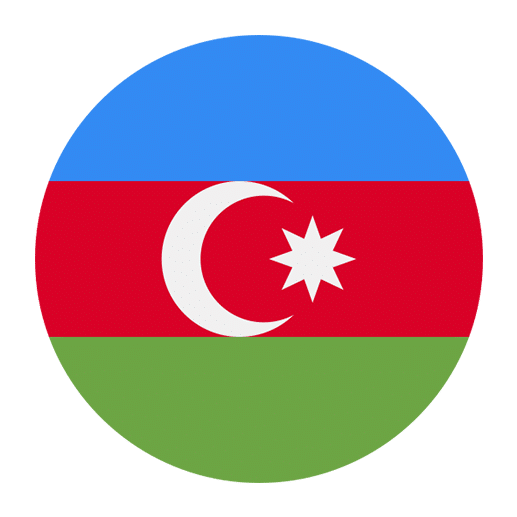Learning a new language is an exciting journey, filled with the discovery of new words, phrases, and grammatical rules. For English speakers looking to learn Azerbaijani, one important aspect to master is the formation of adverbs from adjectives. Adverbs are essential in adding detail and nuance to your sentences, making your communication more precise and vivid. This article will guide you through the process of converting adjectives into adverbs in Azerbaijani, providing a comprehensive understanding of the rules, patterns, and exceptions.
Understanding Adjectives and Adverbs
Before diving into the specifics of Azerbaijani, it’s crucial to understand the roles that adjectives and adverbs play in a sentence.
Adjectives describe or modify nouns. For example, in English, “quick” is an adjective in the sentence “She is a quick runner.”
Adverbs modify verbs, adjectives, or other adverbs. They often answer questions like “how,” “when,” “where,” and “to what extent.” For instance, in English, “quickly” is the adverb in the sentence “She runs quickly.”
Similarly, in Azerbaijani, adjectives and adverbs serve the same functions. However, the way they are formed and used can differ significantly from English.
Forming Adverbs from Adjectives
In Azerbaijani, many adverbs are formed from adjectives by adding specific suffixes. The most common suffix used for this purpose is “-ca/-cə.” The choice between “-ca” and “-cə” depends on vowel harmony, a fundamental aspect of Azerbaijani phonology.
Vowel Harmony
Vowel harmony in Azerbaijani means that vowels within a word harmonize to be either front or back vowels. This affects which suffix is added to form adverbs from adjectives.
– If the last vowel of the adjective is a back vowel (a, ı, o, u), you add “-ca.”
– If the last vowel of the adjective is a front vowel (ə, i, ö, ü), you add “-cə.”
Let’s look at some examples:
Back Vowels
– “Təmiz” (clean) becomes “təmizcə” (cleanly)
– “Böyük” (big) becomes “böyükcə” (bigly)
Front Vowels
– “Yaxşı” (good) becomes “yaxşıca” (well)
– “Kiçik” (small) becomes “kiçikcə” (smallly)
Special Cases and Exceptions
While the “-ca/-cə” suffix is the most common way to form adverbs, there are some adjectives that form adverbs irregularly or have unique adverbial forms. Here are a few examples:
– “Çox” (many/much) becomes “çox” (very) as an adverb. It does not change form.
– “Gözəl” (beautiful) becomes “gözəl” (beautifully) without any change.
Additionally, some adjectives might take different suffixes or forms based on context or usage. It’s important to practice and get familiar with these exceptions through exposure and usage.
Usage of Adverbs in Sentences
Once you’ve formed the adverb, the next step is to use it correctly in a sentence. In Azerbaijani, adverbs typically follow the verbs they modify, similar to English. However, word order can be more flexible, and emphasis can change depending on the placement of the adverb.
For example:
– “O, sürətli qaçır” means “He/she runs quickly.”
– “O, sürətli danışır” means “He/she speaks quickly.”
In these sentences, “sürətli” (quickly) is the adverb modifying the verbs “qaçır” (runs) and “danışır” (speaks).
Adverbs Modifying Adjectives
Adverbs can also modify adjectives, adding another layer of meaning. In such cases, the adverb typically precedes the adjective.
For example:
– “Çox gözəl” means “very beautiful.”
– “Daha yaxşı” means “better” (literally “more good”).
In these examples, “çox” (very) and “daha” (more) are adverbs modifying the adjectives “gözəl” (beautiful) and “yaxşı” (good), respectively.
Adverbs Modifying Other Adverbs
Adverbs can also modify other adverbs to add even more detail to the action.
For example:
– “Çox sürətli qaçır” means “He/she runs very quickly.”
– “Daha yavaş danışır” means “He/she speaks more slowly.”
In these sentences, “çox” (very) and “daha” (more) are adverbs modifying the adverbs “sürətli” (quickly) and “yavaş” (slowly).
Practice and Application
The key to mastering the formation and usage of adverbs in Azerbaijani is practice. Here are some exercises to help you get started:
Exercise 1: Forming Adverbs
Convert the following adjectives into adverbs:
1. Sürətli (quick)
2. Yavaş (slow)
3. Güclü (strong)
4. Zəif (weak)
5. Yaxşı (good)
Exercise 2: Using Adverbs in Sentences
Create sentences using the adverbs you formed in Exercise 1. For example:
1. “O, sürətli qaçır.” (He/she runs quickly.)
2. “O, yavaş danışır.” (He/she speaks slowly.)
Exercise 3: Modifying Adjectives and Adverbs
Use adverbs to modify adjectives and other adverbs in sentences. For example:
1. “Çox sürətli qaçır.” (He/she runs very quickly.)
2. “Daha yaxşı oxuyur.” (He/she reads better.)
Conclusion
Forming adverbs from adjectives in Azerbaijani involves understanding and applying specific suffixes, primarily “-ca” and “-cə,” according to vowel harmony rules. While the process might seem challenging at first, consistent practice and exposure will make it easier over time. By mastering adverbs, you’ll be able to express actions and qualities with greater precision and detail, enhancing your overall proficiency in Azerbaijani. Keep practicing, and soon you’ll find yourself using adverbs naturally in your conversations and writing.

